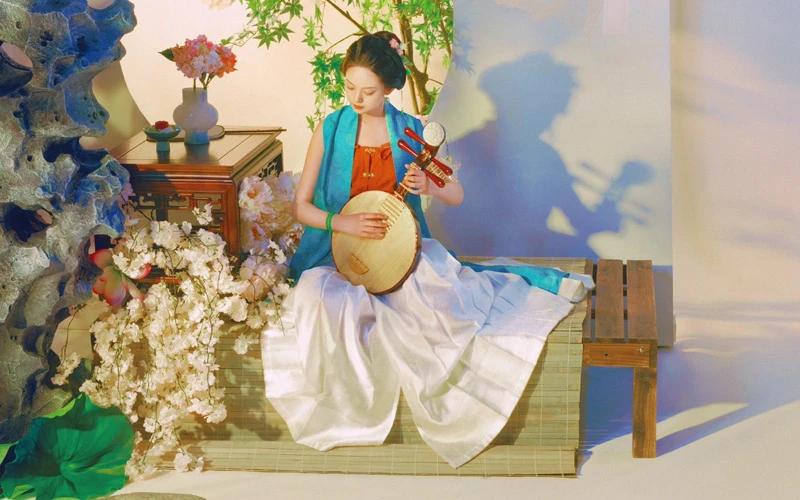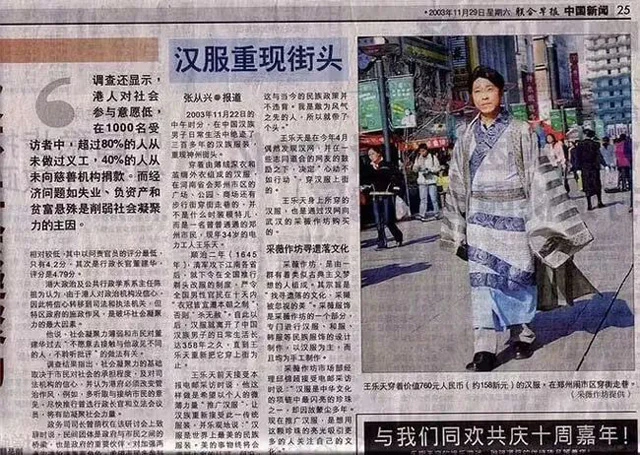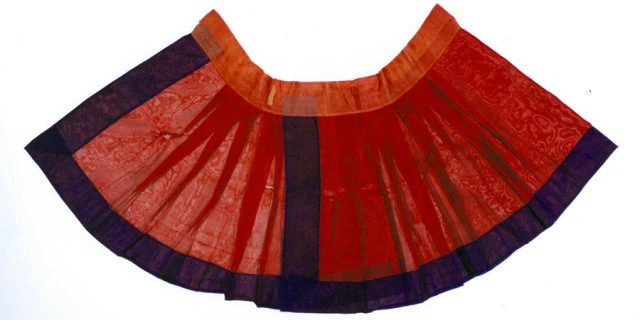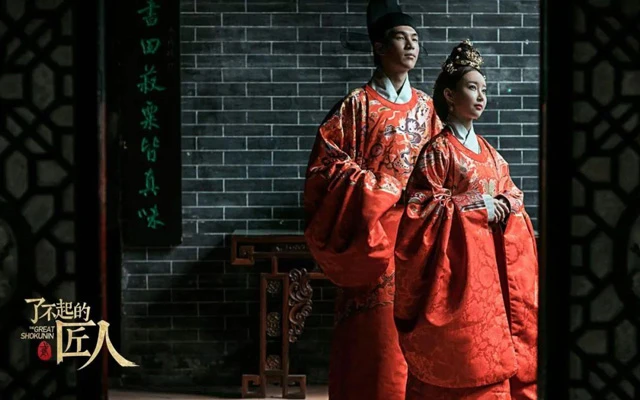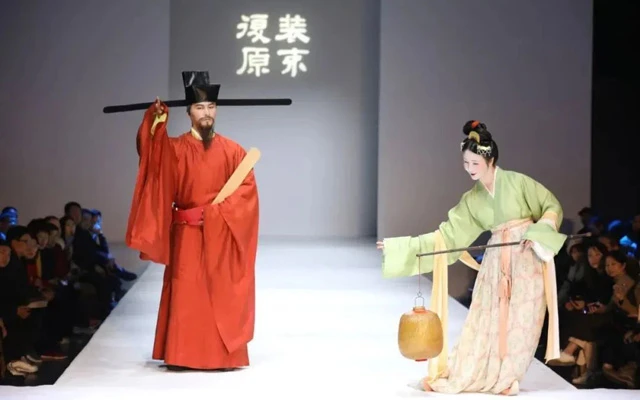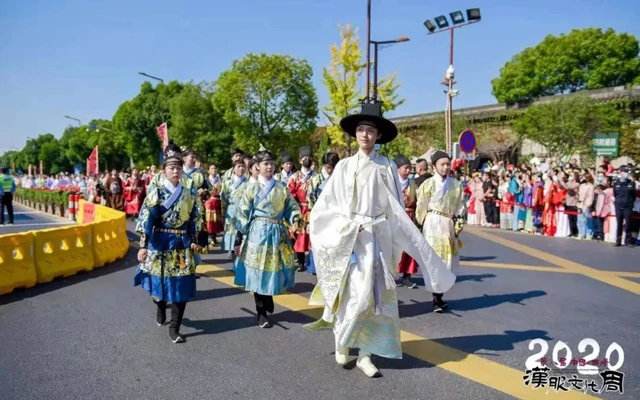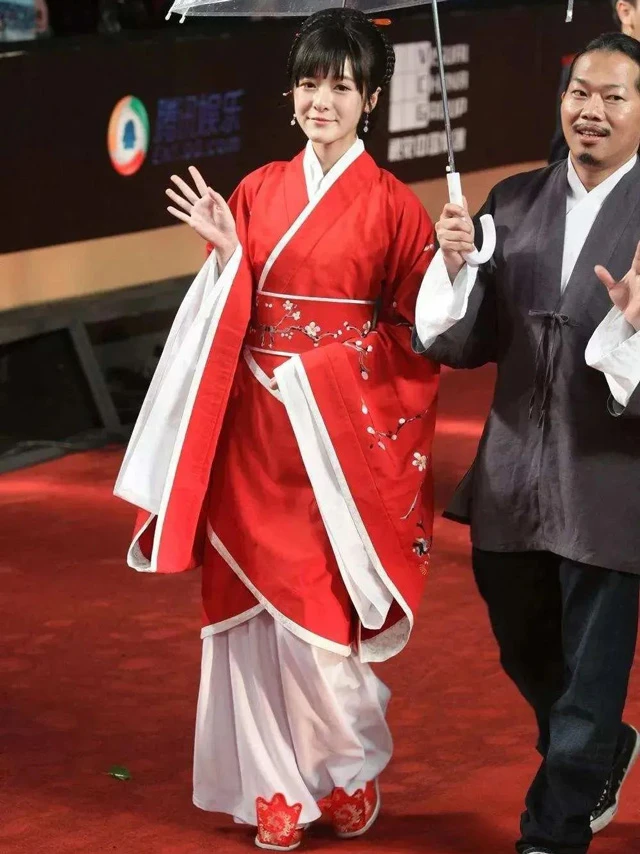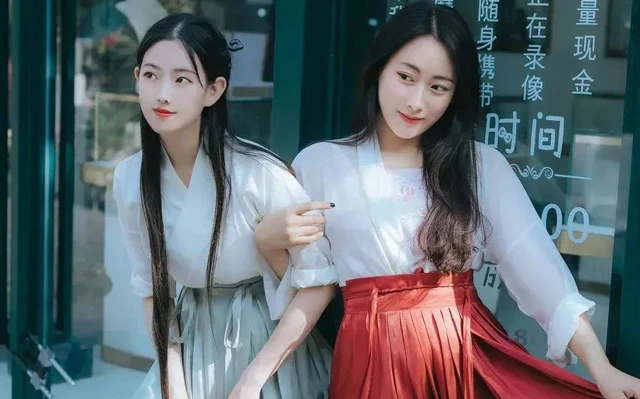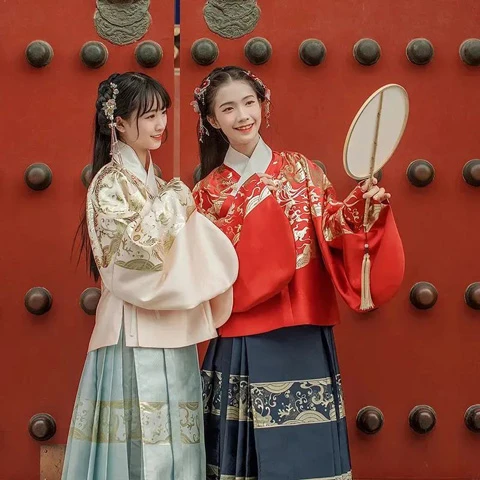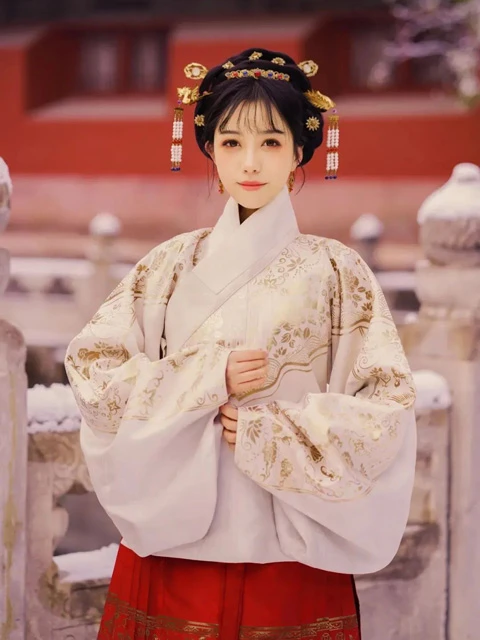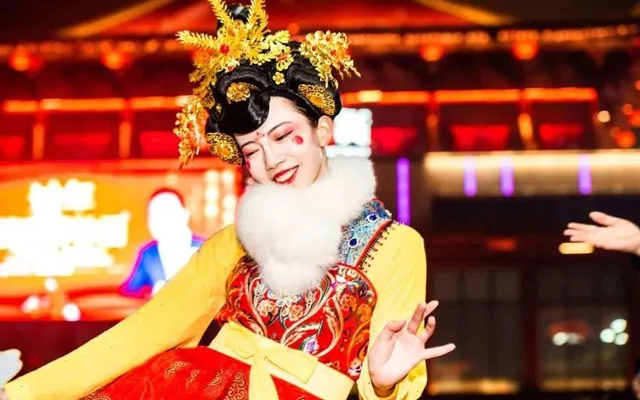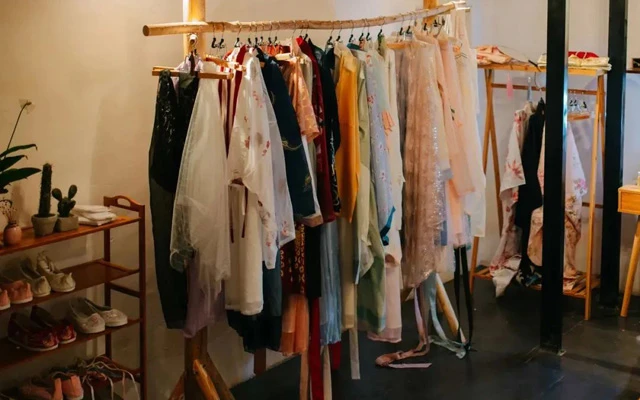The China Spring Festival Gala of 2024 received high praise, with the program "Nian Jin" providing a delightful surprise to the audience. Liu Tao, Liu Shishi, Li Qin, and Guan Xiaotong appeared on stage in costumes from different dynasties such as Han, Tang, Song, and Ming, leading a group of Hanfu girls to present a visual feast of traditional culture to the audience. Hanfu has finally gained recognition once again, being showcased to people nationwide and even worldwide.

Behind this success lies a movement called the "Hanfu Revival" that has been unfolding over the past twenty years. Countless enthusiasts of Hanfu, undaunted by criticism, have cherished traditional values, all in the pursuit of reviving the attire of the Han people that was once stripped away. From facing scrutiny to now being ubiquitous, how has the revival of Hanfu come to this point, and what drives their unwavering dedication?
In 2003, a group of awakeners and practitioners of Han culture began to gather on a forum called Han Wang, where one of the main topics of discussion was Hanfu. Despite being relegated to the sidelines of history during the late Ming and early Qing dynasties, Hanfu, as a traditional attire of the Han people, remained in people's hearts for centuries. In fact, even during the Republican era, some experts and scholars called for the revival of Hanfu. Figures such as Zhang Taiyan, the pioneer of modern Hanfu, who wore a cross-collared garment embroidered with the character "Han" on the front, as well as Qian Xuantong advocating for Hanfu, Xia Zhenwu in traditional Shenyi attire, and Zhang Daqian traveling in Europe in wide-sleeved robes, all carried on the legacy of Hanfu. However, due to the turmoil of the times, these efforts eventually faded away.
The peaceful and prosperous start of the new century provided a fresh opportunity for the revival of Hanfu. The gathering of these individuals became the spark igniting the current path of Hanfu revival. Referring to the line from the Book of Songs, "Why do you say you have no clothing? With you a cloak is what I'm sharing." they began to call each other "tongpao" (同袍) and delved into ancient texts to research and even create their own Hanfu, sharing them online. In 2003, at the age of 19, Wang Yuliang created his first Hanfu based on styles from the Han Wang forum and publicly shared it online on July 21st, becoming the first person to showcase self-made Hanfu.
On November 22nd of the same year, a power plant worker named Wang Letian, with the assistance of the first Hanfu store in China, Caiwei Workshop, replicated a Hanfu style from the TV drama "The Prince of Han Dynasty" and walked the streets of Zhengzhou. This event, reported by Singapore's Lianhe Zaobao, immediately attracted widespread attention from both domestic and international media, marking the first significant public event that propelled the Hanfu revival movement.
People are beginning to discover the existence of Hanfu, realizing that behind Hanfu lies a plethora of stories that should be remembered. In essence, Hanfu is the traditional attire of the Han ethnic group, with its origins tracing back to the time of the Huangdi (Yellow Emperor), taking shape during the Zhou Dynasty, and being standardized by the Han Dynasty with a complete system of ceremonial garments. Despite undergoing some changes in later dynasties, it has generally retained features such as the crossed-collar and right lapel, as well as flat cutting. Ideally, Hanfu should have been passed down through generations like the traditional attire of nations such as Japan and Korea.
However, with the entry of the Qing Dynasty at the end of the Ming Dynasty, in order to weaken the Han people's sense of national identity and maintain Manchu rule, the Qing government implemented the policy of "shaving hair and changing costume." This policy not only forced the Han people, who had always adhered to the principle of "one's body and skin are inherited from one's parents and should not be harmed," to shave their hair into the Manchu queue hairstyle, but also prohibited commoners from wearing Hanfu.

As a result, Hanfu gradually faded from the daily lives of the Chinese people until today. If it were just a piece of clothing, its disappearance from history would not be regrettable. However, as a clothing system that has been passed down for thousands of years, the value of Hanfu lies not only in its practicality but also in its cultural significance. Traditional attire of any ethnic group is inherently intertwined with the people's way of life, habits, and spiritual pursuits.
The fabric techniques and patterns have reached a level of artistry, not to mention the styles of the broad-sleeved robe and elaborate sash. Even with the simplest fabric, the graceful and smooth lines exhibited during movement reflect the gentle, serene, and transcendent national character of the Han people, as well as their implicit natural, elegant, and fresh aesthetic taste.
It is well known that ancient China emphasized respect, etiquette, rules, and regulations, and Hanfu served as the perfect embodiment of these behaviors. Not only did emperors, officials, soldiers, and civilians have their specific attire regulations, but there were also specialized clothing for key life events, such as sacrificial ceremonies with sacrificial attire, court audiences with court dress, auspicious occasions with festive attire, military service with military uniform, mourning with mourning attire, the coming-of-age ceremony for men transitioning from childhood to adulthood involving changing hairstyles, and the hairpin ceremony for women transitioning to adulthood requiring hair to be styled into a bun at the back of the head with hairpins.
Although these stringent and intricate ceremonial norms may now appear heavily marked by class distinctions, in feudal society, they were indeed manifestations of advanced culture. Therefore, with the influence of Han culture, Hanfu also spread to neighboring countries, and the attire of countries such as Japan, Korea, and Vietnam were all modeled after Hanfu, combined with their own lifestyle habits and climatic environment.
Consequently, when Wang Letian and other pioneers brought Hanfu to the public eye, some discerning individuals came to understand the history of their own nation's traditional attire. While history may be unchangeable, culture can be reborn. Thus, a grassroots movement centered around the revival of Hanfu as a means to rediscover confidence in Chinese culture began to unfold across the land. Like the development of any entity, the road to the revival of Hanfu hopes to progress alongside obstacles.
Today, as we look back at the beginnings of the Hanfu movement, it was not dignified at all. Because at that time, those discussing the promotion of Hanfu were just ordinary people, although passionate, most of them did not have significant economic power, nor did they have access to purchasing channels, and they did not possess a comprehensive knowledge system. Therefore, despite the slogans, even those who acquired Hanfu had very rudimentary attire, not conforming to the established forms, sometimes even resembling styles from photo studios. Yet, it was their foundation that laid the groundwork, establishing clubs in schools and society, organizing activities, which eventually ignited the spark of the Hanfu revival movement.
After a long and chaotic period of trial and error in the early stages, the Hanfu revival movement finally began to have influential figures. In November 2007, a young scholar "Xie Fang Zhu Ren" founded the "Daming Yiguan - Forum on Chinese Costume History" and posted a large number of anime version Ming dynasty costumes for promotional and educational purposes.
The exquisite and meticulous restoration in the images provided new insights into Ming-style attire for many. In March 2009, the Hanfu brand "Minghuatang," dedicated to the restoration and research of Han Chinese attire, was officially registered in Hong Kong. Due to the meticulous craftsmanship and highly authentic reproduction of the fabric, form, and patterns of Ming-style attire, Hanfu produced by Minghuatang became highly regarded by many enthusiasts.
In the same year, in October, the Hanfu Costume Restoration Group launched the first batch of restored works based on ancient texts, such as the Western Han Quju Robe, the Sixteen Kingdoms Ruqun, setting a new standard within the Hanfu community. In addition to the emergence of influential figures, Hanfu began to be embraced and promoted by some individuals with social influence. In June 2013, Xu Jiao and Fang Wenshan appeared in Hanfu at the Shanghai International Film Festival, marking the first time a celebrity walked the red carpet in Hanfu. In November of the same year, Fang Wenshan initiated the first Xitang Hanfu Cultural Week event, which has continued uninterrupted to this day.
However, compared to these positive developments, due to the lack of widespread knowledge, the public's impression of Hanfu during those years was still either considered exotic garb or confused with Japanese or Korean attire. Therefore, when Hanfu took to the streets, it faced mostly misunderstandings and criticisms. Controversies abound, and even within the Hanfu community, there are debates between the "reformists" and the "traditionalists." The former advocates for "reforming" Hanfu to align with modern elements for everyday convenience, while the latter believes that Hanfu must be restored based on the forms found in historical texts and existing unearthed artifacts; otherwise, it would be considered out of place.
The arrangement of history, at times, is quite coincidental. The revival of ancient Hanfu, surprisingly, owes its resurgence to the cutting-edge technology of the internet. The image of Wang Letian strolling in Hanfu was initially disseminated through the internet, and Hanfu enthusiasts also formed small circles for communication through online platforms. The widespread popularity of Hanfu today can be attributed to the explosive growth facilitated by the internet.
The contemporary fondness for Hanfu by many individuals can be boiled down to a simple and straightforward reason - its beauty. Ever since the awareness of Hanfu rose, girls who used to mimic the White Snake from "The Legend of the White Snake" by draping bedsheets finally found a reason to don the equally exquisite attire as seen in the drama. With a heritage spanning a millennium, the styles of Hanfu are incredibly diverse, each possessing its unique charm.
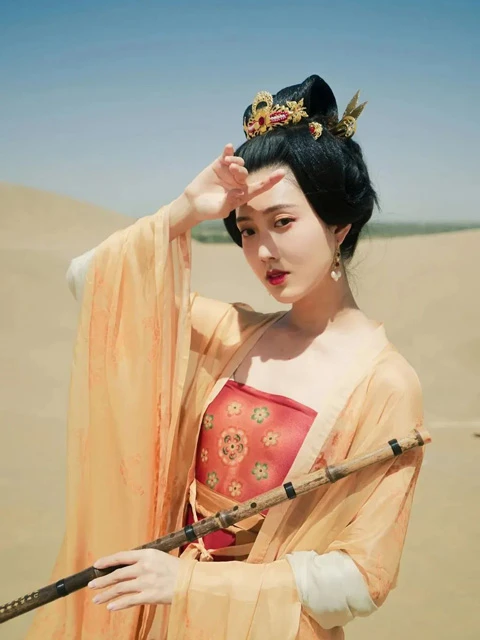
From the elegance and solemnity of the Qin and Han dynasties, to the grace and charm of the Wei and Jin periods, the grandeur and luxury of the Tang dynasty, the grace and subtlety of the Song dynasty, and the dignity and magnificence of the Ming dynasty. There is bound to be a style that resonates with your aesthetic sensibilities. These Hanfu garments, apart from being worn in daily life and traditional festivals, are also extensively used for travel photography. Ancient capital cities such as Xi'an, Luoyang, and Hangzhou have become popular tourist destinations, attracting enthusiasts of traditional culture and individuals who simply enjoy photography to visit dressed in Hanfu.
In Xi'an, Shaanxi, girls in flowing robes and wide sleeves visit landmarks such as the Giant Wild Goose Pagoda and the Tang Paradise; in Luoyang, Henan, you might find yourself the only one in modern attire on a metro; in Hangzhou, Zhejiang, tourists don Hanfu to participate in the lantern festival and enjoy night tours of West Lake. The pursuit of beauty is a universal language. On social media platforms, some celebrities, internet influencers have begun to incorporate Hanfu into their daily lives, photoshoots, and events, thereby introducing more people to and fostering a fondness for Hanfu.
In addition to top-down promotion, there is also a bottom-up infiltration. Nowadays, many schools in China have incorporated Hanfu into their regular curriculum. As these children grow up, Hanfu will no longer be viewed as exotic attire but rather as a traditional national costume worn in daily life. This indicates that Hanfu can seamlessly integrate into modern life, it just needs to be more widely recognized. It is foreseeable that in the near future, the Hanfu revival movement will ultimately achieve its initial goal.
One aspect is its integration into daily life. More and more people are beginning to view Hanfu not as ancient costume, but as ordinary attire suitable for various down-to-earth activities. The other aspect is the emphasis placed on the Han culture embodied by Hanfu. We often talk about cultural inheritance, but the transmission of culture requires carriers. Hanfu is undoubtedly one of the best carriers for this purpose.
